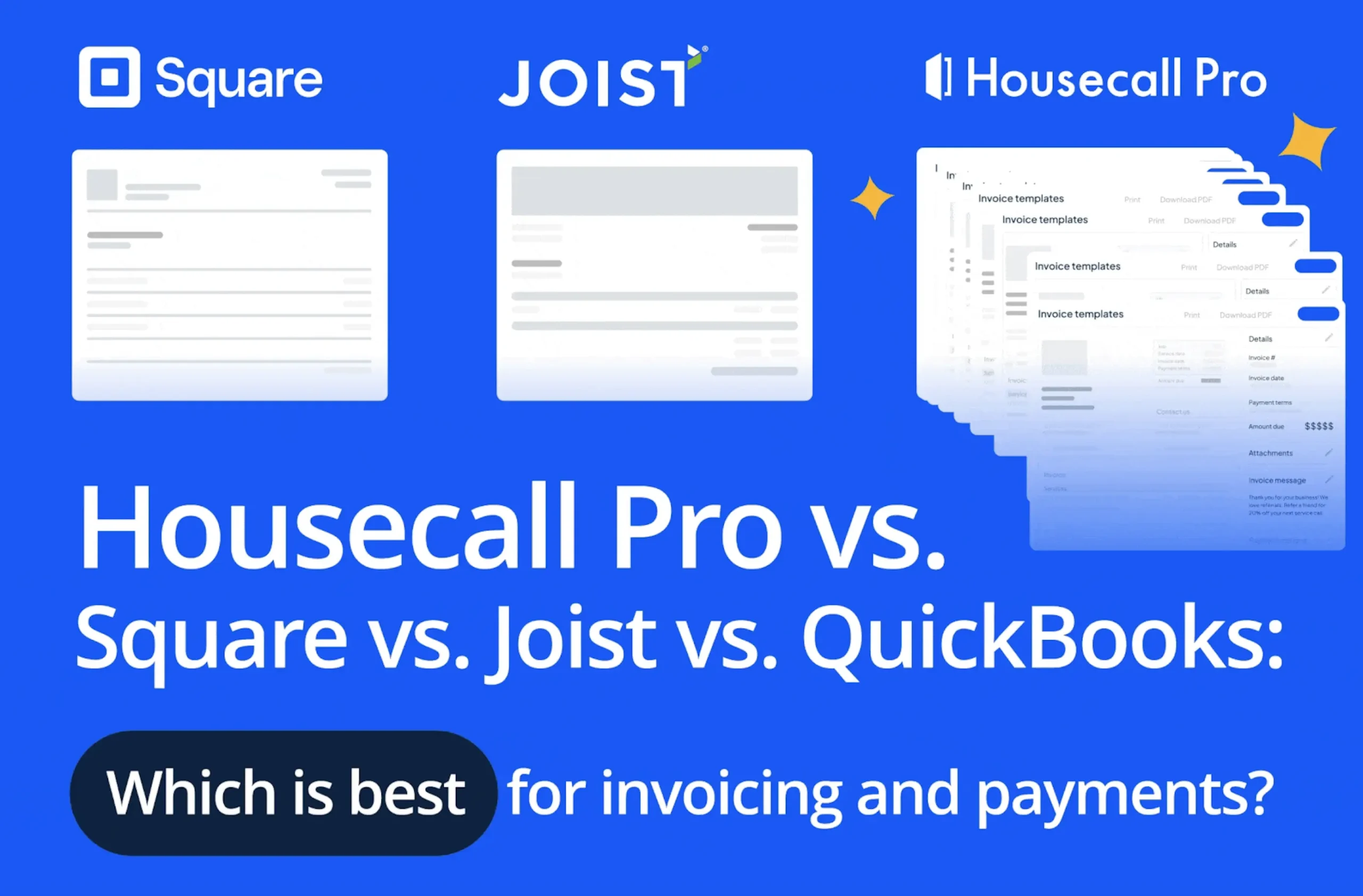
If you’re relying on industry rule-of-thumb figures to estimate your overhead, markup, and other numbers, you’re not alone. It’s common for residential and small commercial service businesses to use industry norms in a variety of ways, such as when assessing their overhead expenses and pricing their services.
And you can get by for a while using generic numbers. But the truth is, they never really work as well as your real numbers. Here are two important reasons why:
Industry standards include many types of companies under one umbrella.
When you see something like the average revenue for an HVAC company — even location-specific data — this can represent a lot of types of HVAC companies, from small one truck operations to major franchises. These companies can have very different expenses and service areas that bear little resemblance to your own company.
Small differences add up.
If you’re pricing your services by guessing at your overhead and you’re a couple of percentage points off, that difference can add up to thousands of dollars not going into your bank account.
Identify your business’s goals
Even if you’re shaking your head at this and you’re already a firm believer in the importance of “knowing your numbers,” there’s an infinite number of statistics you can track for your business. Are you confident you’re tracking the best numbers for your company?
Companies often assume they’re tracking the best numbers because, once again, there are metrics that are commonly talked about within their industry, so obviously that’s what you should track right?
But don’t you have specific goals and visions for your company? And don’t you want to stand out from your competition? The metrics you track should help you achieve your personal goals and help your business thrive in its own unique way.
This is the point of tracking key performance indicators (KPIs). KPIs are specific metrics — such as gross revenue or average ticket cost — that you use to gauge the success of your company overall or the success of a specific goal or action.
And the KPIs you track should match up with the goals you set for your company and where you’re at in your journey. To help you out, Housecall Pro has teamed up with Brett Neal, a certified public accountant and tax consultant that specializes in working with HVAC and plumbing contractors, to bring you a strategy for deciding which numbers or to track and what to do with what you learn.
For this guide, we’ll be specifically using examples that apply to plumbing, HVAC, and electrical contractor companies making high six figures or low seven figures and striving for that next benchmark.
How to set up and evaluate your home service business data
Understand your business’s story
When Brett starts working with a new customer, all too often they want to know right away how well they’re doing. They want a singular answer about whether they’re successful. But whose standard are they using?
If a new customer comes in and offers Brett their gross revenue, this number doesn’t tell him anything about how they got there, what they’re doing to grow as a company or where they’d like to head, what kind of clientele they have, and whether the owner is sleeping at night or constantly putting out fires.
On its own, a single number doesn’t say much, and Brett’s advice is to stop valuing a single, isolated number and to start prioritizing your story.
See, your numbers can begin to tell your story.
While a single number doesn’t mean much, when you’re able to compare it to where you were a month ago or around this time last year, all of a sudden there’s a pattern. A story starts to emerge.
Why were sales different in January of 2019 and January of 2020? What changed?
And if a story doesn’t start to emerge, you haven’t kept a good enough log of the activities of your business. Your numbers are simply a representation of the work you’ve done.
Case study: learn how one electrical company used KPIs and became a $4 million business
Tracking the right numbers to tell a detailed story
Now, we’re not saying you need to track two dozen metrics. But you want to track enough data to understand how the changes you’re making to your business are working.
As we explained above, the KPIs you track should be based on the specific goals you set for your company. Your goals might be related to desired financial growth, employee retention, customer satisfaction, operational efficiency, etc. What are your goals for this year, as well as your long-term goals for the next three, five, or ten years?
The metrics that you track related to these goals are not limited to your finances. Tracking the average time spent traveling between jobs, the number of reviews each employee brings in, or what percentage of maintenance contracts are renewed each month are all examples of non-financial KPIs you might track related to a specific goal.
Setting SMARTER Goals
When figuring out which metrics to track, we recommend setting SMARTER goals.
The goal of John Doe HVAC is to work smarter instead of harder by scoring more big-ticket jobs and spending less time on smaller service calls.
More specifically, John Doe wants to increase his company’s average ticket price by 20 percent within twelve months. This is an example of a SMARTER goal, which is:
- Specific: A goal is unambiguous and specific in what is to be achieved.
- Measurable: It is clear how to measure the goal and the outcome you’re hoping for.
- Attainable: Reaching the goal is realistic.
- Relevant: The goal is tied to your overall company values and objectives.
- Time-Bound: Your goal has a realistic deadline.
- Evaluated: You’re able to assess your company’s progress toward the goal at regular intervals and are prepared to deal with obstacles.
- Recognized/Rewarded: At the end of your deadline, you assess the company’s success or failure to meet the goal, recognize and reward your employees for their performance.
As you can see, SMARTER is more than a type of goal, it’s also a framework that helps you to succeed in meeting your goals.
What you need to meet your business goals
We can further break down John Doe’s main goal into related marketing and sales goals. Then we can see what data would be useful to determine how to meet these goals.
Primary goal: Increase the company’s average ticket price by 20 percent within twelve months.
Marketing Goal: Attract Better Leads.
Metrics used to track progress:
- Total number of leads per month
- Total conversion rate
- Source of leads
- Average value of leads per source
- Conversion rate per source
- Percentage per service type per source
Sales Goal: Increase the Value of Each Ticket.
Metrics used to track progress:
- Average revenue per ticket — total and per service type
- Number of calls per day and month — total and per service type
- Percentage of estimates won — total and per service type
KPIs tend to come in a bundle because they work together to tell the story of your company.
Tracking your KPIs is not a one-and-done thing. For instance, if John Doe wants to increase his average ticket value, it will be useful to see whether the ticket value, as well as the average value of leads coming in from different sources, changes depending on the season.
The longer you track specific metrics, the more insights you’ll be able to glean from them:
- What processes have changed internally that make a difference?
- What has changed externally such as changes to your lead sources, the economy, customer trends, and fads?
Using your company’s insight
Improve your systems
Whatever your goal — whether you’re looking to raise your prices, cut costs, work with a new vendor, or add an additional service line — you can make a guess about how changes will impact your company. But if you’re able to use real company data, it stops being such a stab in the dark.
Once you have data:
- Use your findings to form a plan.
- Continue to track the same KPIs to see the impact of changes you make.
Back to our example, here’s how John Doe can start to improve his marketing and sales processes based on his findings.
Marketing: Once he knows the value of leads from different sources, he can make smarter decisions about whether to invest his marketing dollars. When he keeps tracking this information over time, he can also see which months he gets a better return on investment and adjust his spending to match.
Sales: Besides just seeing whether his average ticket value is increasing, using the same metrics, he can see if his total number of sales is increasing over time, as well as what kinds of jobs he’s more likely to close on.
Over time, he can use these findings to evaluate whether the sales process is working effectively and the impact of changes he makes on the process.
- Is he using a good tiered pricing system? Does his average ticket cost increase if he raises his prices or moves to a different pricing system? Does he lose sales overall or just lower ticket items?
- Do his techs have tools that enable upsells? What happens to the average ticket value when they start using something like Housecall Pro’s Sales Proposal Tool?
- Are there gaps in the company’s sales training or protocols? What is the return on investment (ROI) of bringing in a sales consultant?
Make informed business decisions
KPIs should always be used when making major decisions, such as when you’re hiring, making major purchases, or adding a new service line.
You need months’-to-years’ worth of data to truly see patterns. Once you have it, you can leverage this data to make smarter decisions. Incorporating reliable software tools is crucial in this process. For instance, if you’re utilizing QuickBooks for your HVAC business, you can effectively analyze financial trends and performance metrics.
Here is what Brett recommends when his clients are preparing to make major decisions:
- Use historic data to set a reasonable goal.
- Establish a plan to meet that goal with incremental benchmarks and a final deadline.
- Each week, look at your initiatives and what you’re succeeding in, and what objectives you’re still not meeting. Figure out what’s working, what’s not, and what small changes you need to make to continue progressing toward your goal.
- Set up consistent meetings with an accountant, or accountability partner where you look at historic and current data. Use your accountant to hold you accountable for meeting your financial goals.
Forecast your business needs
Data isn’t just about meeting goals and making decisions, it’s also useful to get a sense of where your company will be in the future. If you’re not thinking about what’s going to happen over the next three to six months, how can you anticipate the next steps you need to take to grow your business or how you’re going to lead it?
Three things to consider when forecasting out are cash flow, cyclical slow times, and new opportunities.
Understand there is a difference between the amount of cash you have in the bank and the actual amount of cash you have to fund the business, let alone pay yourself a profit. Tracking this data over time can help you anticipate your net cash flow and keep you out of trouble. Similarly, recognizing economic or seasonal downturns can help you set aside needed cash requirements to get your company through the slow months.
Use your data to predict what your cash flow will be like for the next three to six months. Also, determine how many days cash on hand you have, which measures how many days you could continue operations if no further funds were collected.
Another way to use cash in your business is for opportunities. Knowing how your bottom line will change after taxation is powerful information to have in making long-term decisions.
Suggestions to get additional business help
If getting started or upping your numbers game is overwhelming, you don’t have to figure this out alone. Many accountants have experience helping their clients dissect their financials and build processes to measure KPIs.
Note: this isn’t all — or even most — CPAs. The typical accounting firm is interested in preparing your tax return and keeping you out of trouble with the IRS. Similarly, most bookkeepers are only prepared to set up QuickBooks, payable and receivable accounts, and payroll
Brett suggests looking for an accountant that has the industry experience and offers consulting or coaching in addition to basic accounting services. In other words, work with an accountant that understands the arena in which you work.
When Brett starts to work with a new client, he asks them to explain their business to him. Then he asks follow-up questions about their services, customers, their goals, and their pains. Where are they struggling?
What you should expect from a consulting accountant:
- They treat your business as one-of-a-kind. They don’t make assumptions based solely on your industry, location, and services.
- They look for potential issues in the way you set up your books and financial statements and take the time to explain them to you.
- They have suggestions for tools to track advanced financials and other metrics.
- They use historic data to help you forecast out and assess the risks of various business decisions.
But in order to utilize outside help, you have to be coachable. You have to be ready to brainstorm and troubleshoot your business with someone else.






